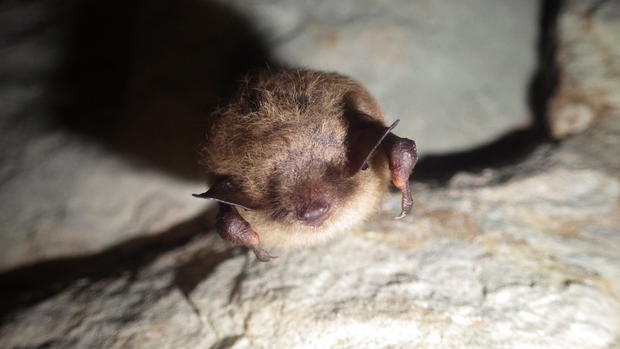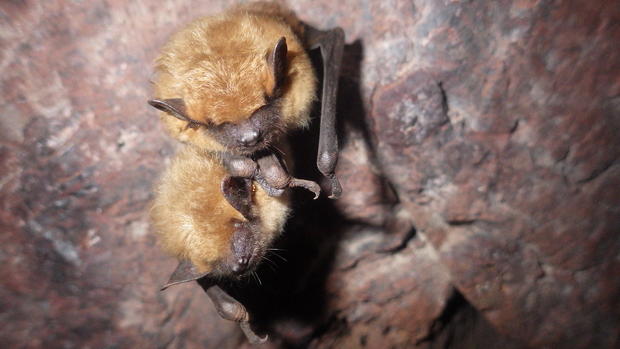DNR: White-Nose Syndrome Is Killing A Significant Number Of Bats In Minnesota
MINNEAPOLIS (WCCO) – Wildlife officials say that white-nose syndrome, which appeared in Minnesota just a few years ago, has ravaged hibernating bat populations, with some caves seeing declines as great as 90 percent.
The Minnesota Department of Natural Resources announced Thursday that annual bat count numbers are, as predicted, substantially lower that they were in 2015, when the disease was first observed in Minnesota.
For instance, at Soudan Underground Mine in northeastern Minnesota, where the disease was first spotted in the state, the bat population there has suffered a 90 percent decrease, DNR researchers report. Likewise, at Mystery Cave in southeastern Minnesota, the bat population there has suffered a 94 percent reduction.
White-nose syndrome gets its name from the white fungus that grows on an infected bat's muzzle. According to the National Parks Service, the cold-loving fungus causes the bats to wake up from hibernation early, use up their fat reserves and die of starvation.
Four Minnesota bat species, all the ones that hibernate in Minnesota during the frigid winter months, are affected. They are the Little Brown Myotis, Northern Long-eared Myotis, Tricolored Bat and Big Brown Bat. The disease is not a threat to humans or animals other than bats.
Why should Minnesotans care about the loss of bats? The answer is simple: mosquitoes. Bats eat lots and lots of mosquitoes.
Already, the DNR says it's heard from residents in areas where bats used to be common that have already noticed a "dramatic increase in mosquitoes."
The blood-sucking insects aren't only ones that bats keep in check. Others include months that feast on farm crops and vegetable gardens. The DNR says that farmers might have to increase pesticide usage to beat back the insects
While white-nose syndrome is thought to spread chiefly from bat to bat, state officials have taken steps to help ensure humans don't spread the fungus from cave to cave. Visitors on public tours are taught how to decontaminate clothing, on which the fungus can survive even after multiple machine washes.
Anyone who sees a dead or sick bat is encouraged to submit a Bat Observation Report.
White-nose syndrome was first documented in North America in 2007, in New York. The disease has since spread to 33 states and multiple Canadian provinces, killing an estimated six millions bats.





